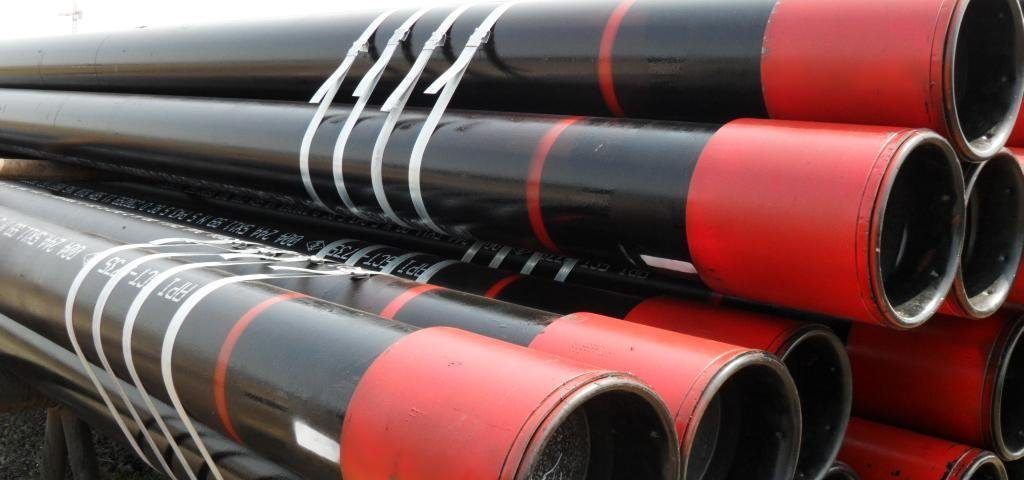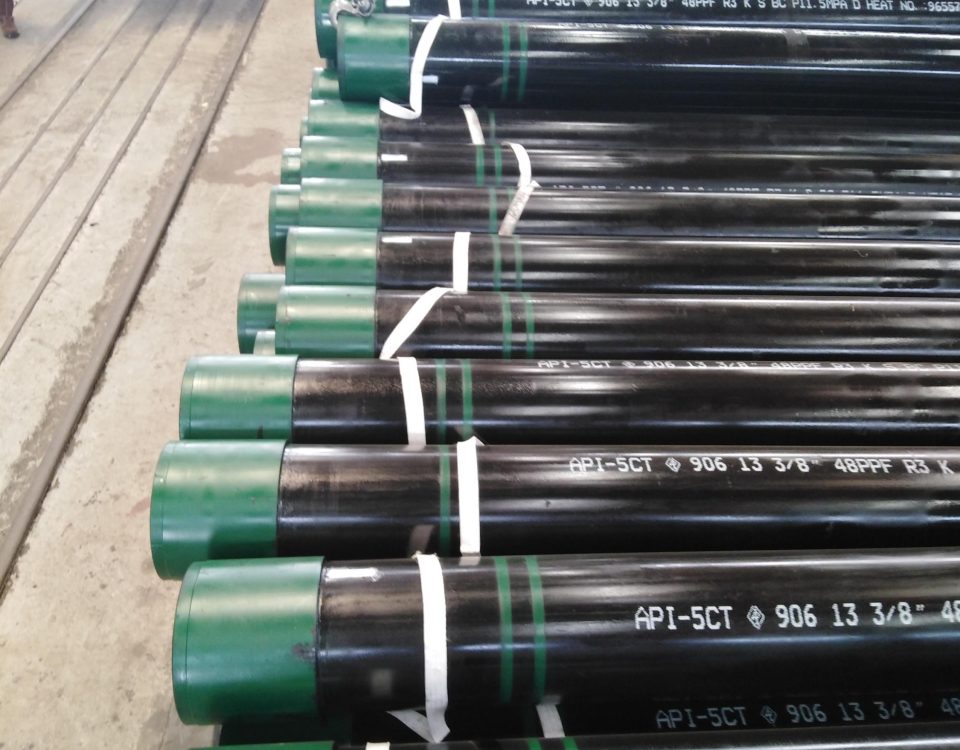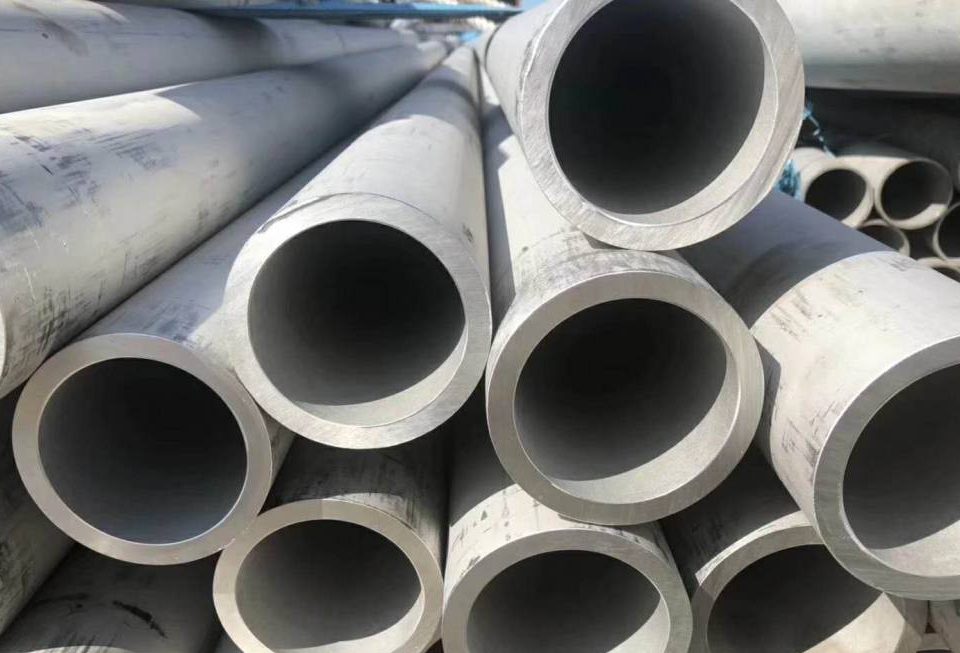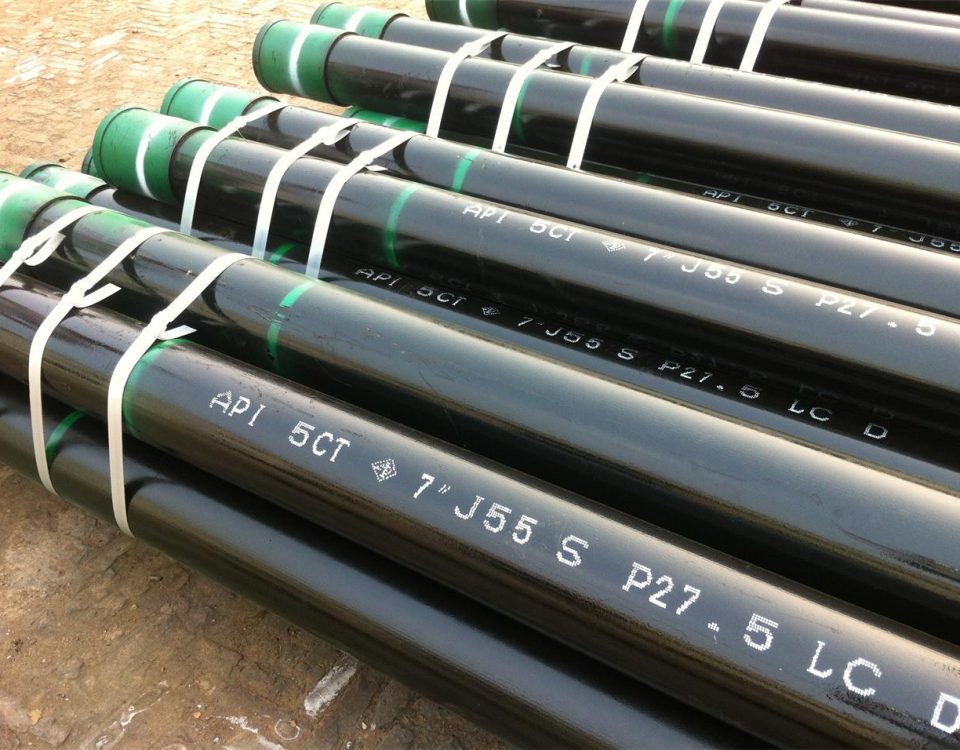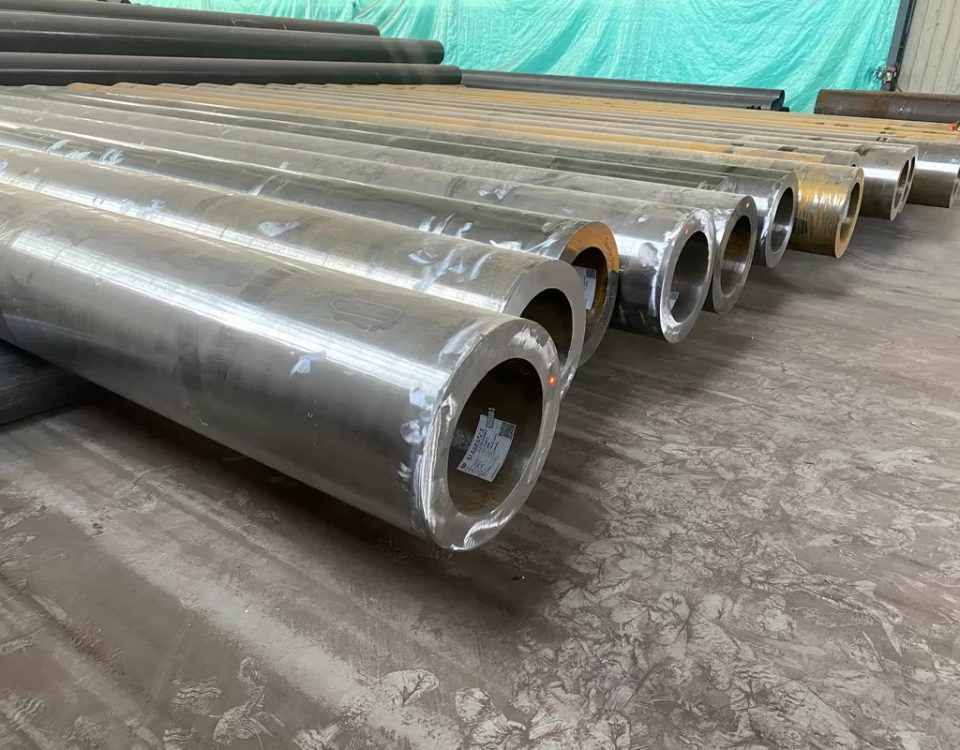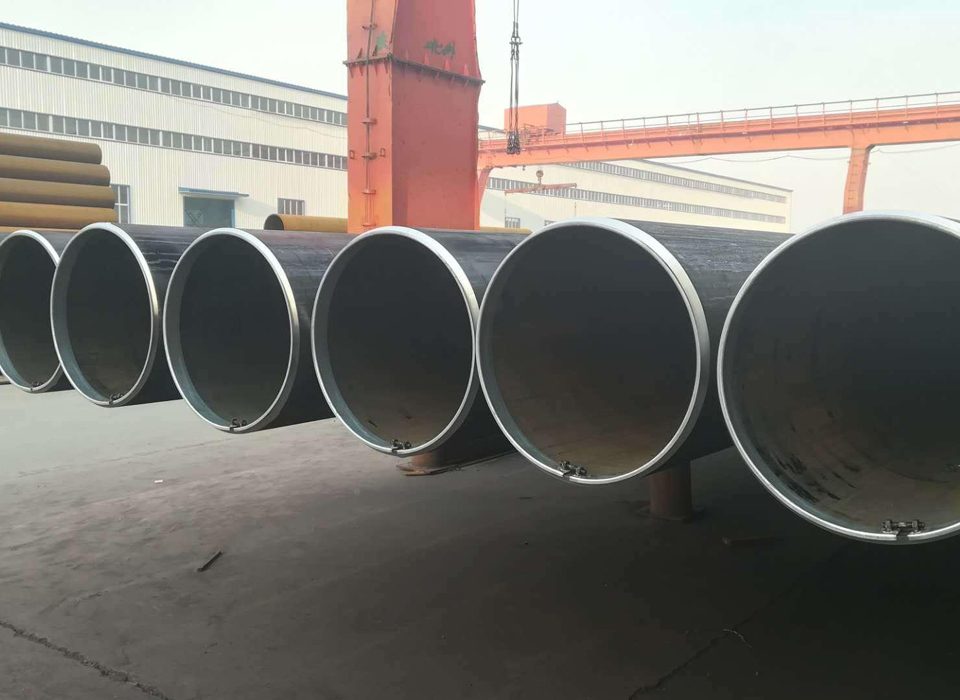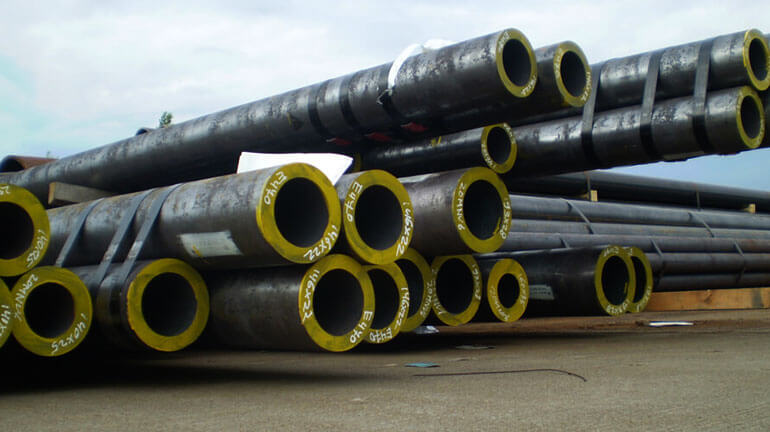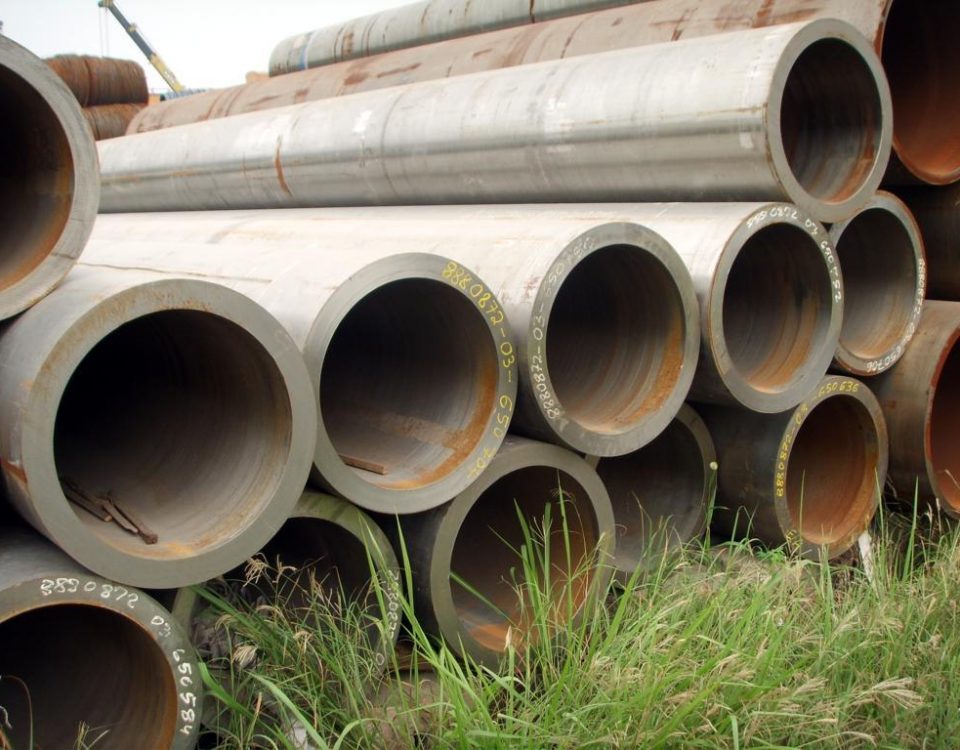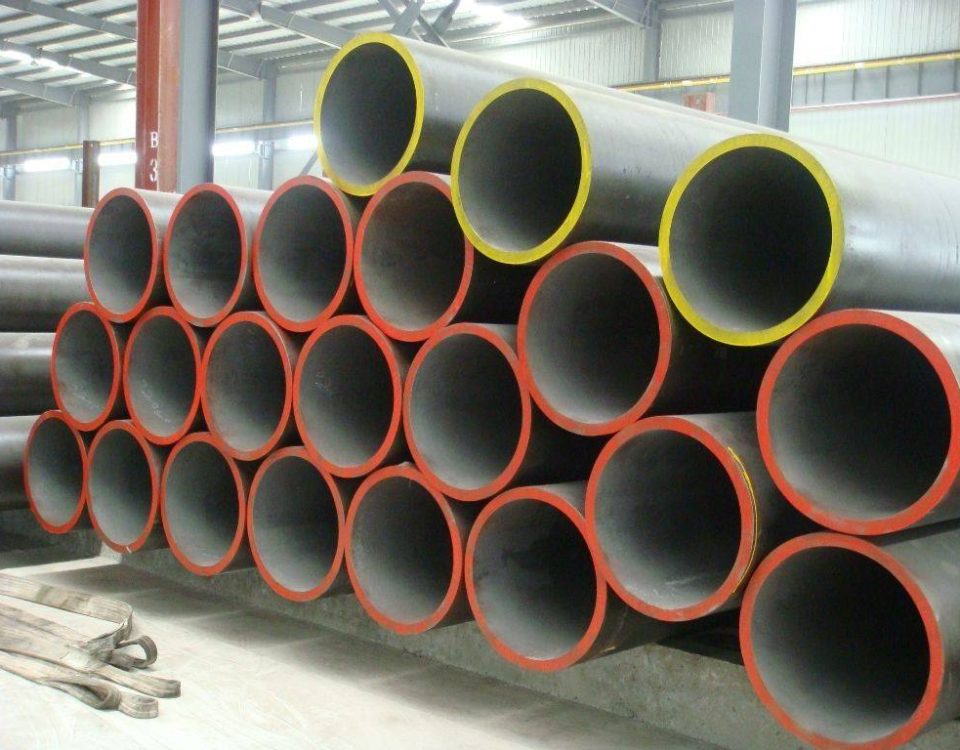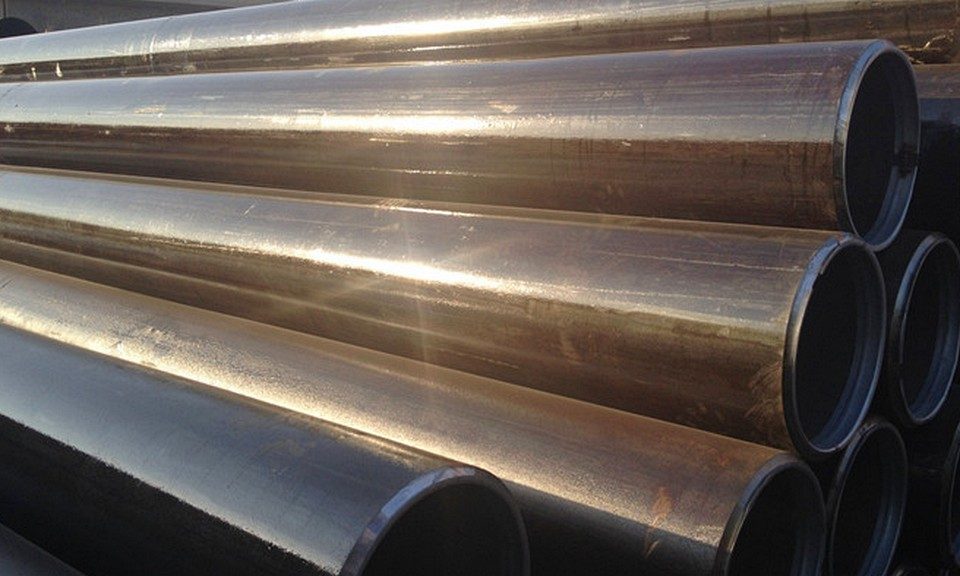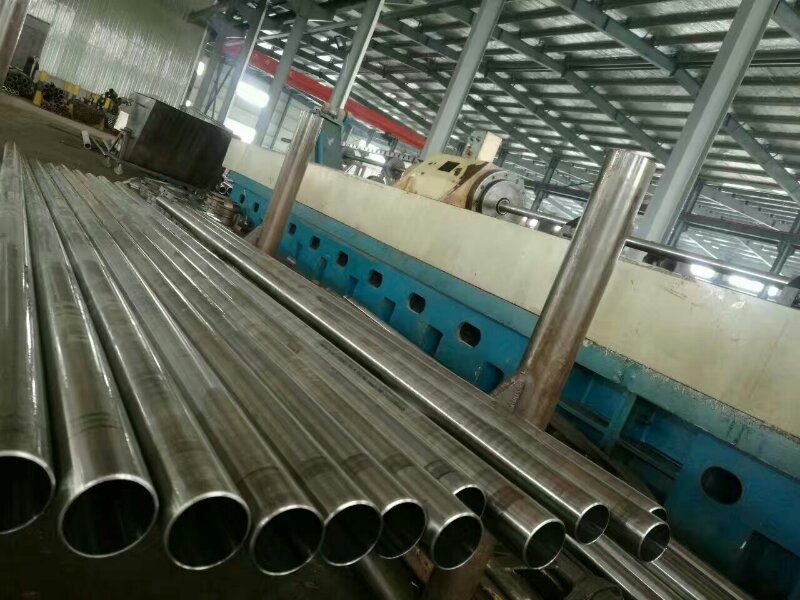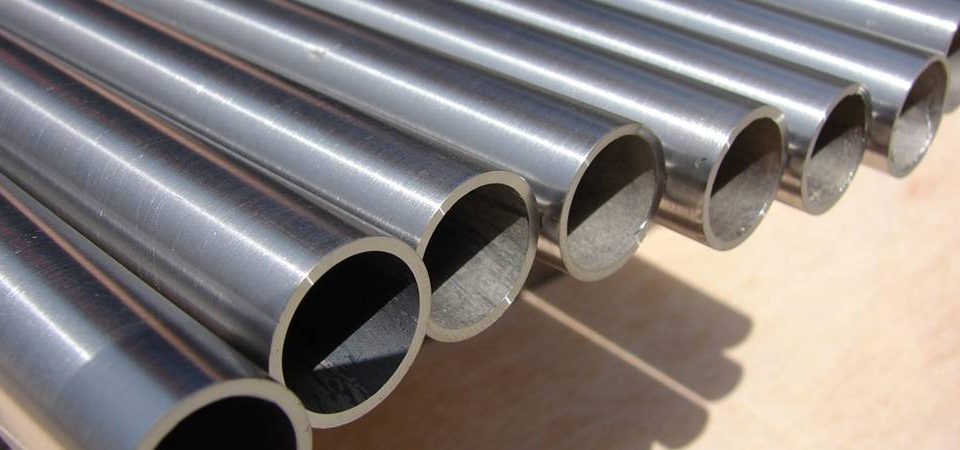Método de construcción de pilotes de cemento y suelo de tubería de acero (método de construcción de pilotes de tubería de acero sintético)
Mayo 31, 2022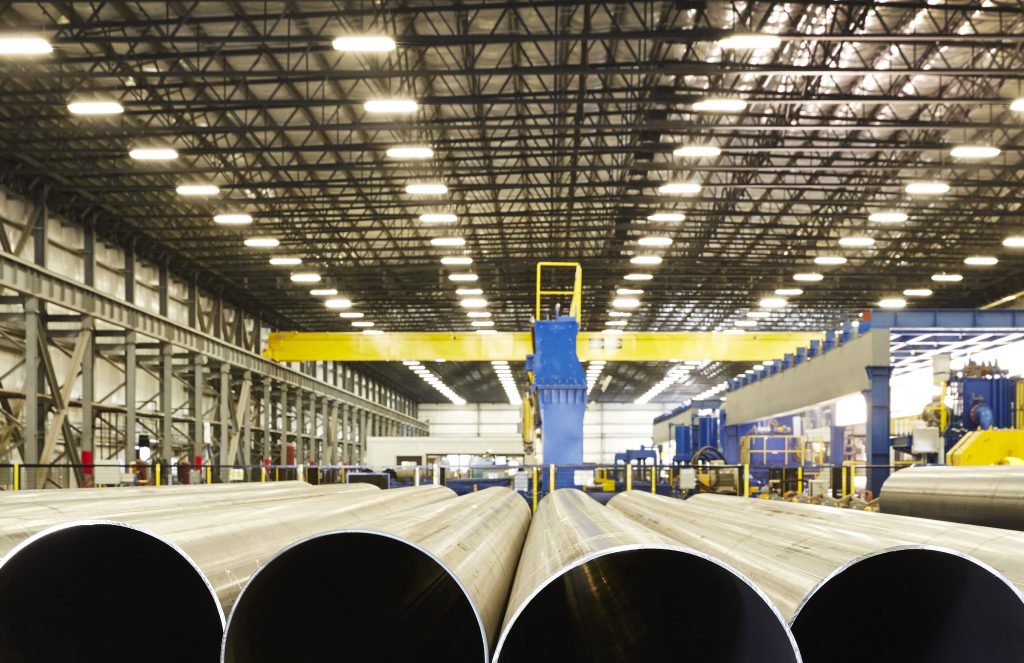
Soldado vs. Producción continua en el proceso de fabricación de tubos
junio 20, 2022- Carcasa
- Clasificación y función de la carcasa.
La carcasa es la tubería de acero que soporta la pared de los pozos de petróleo y gas.. Se utilizan varias capas de revestimiento para cada pozo de acuerdo con las diferentes profundidades de perforación y condiciones geológicas. La cementación con cemento se debe usar después de que la tubería de revestimiento haya bajado por el pozo.. Es diferente de la tubería y la tubería de perforación y no se puede reutilizar.. Es un material consumible de una sola vez.. Por lo tanto, el consumo de tripa representa más de 70% de todas las tuberías de pozos de petróleo. La carcasa se puede dividir en: conducto, envuelta superficial, carcasa técnica y carcasa de aceite según el uso, su estructura en el pozo de petróleo se muestra en la figura 1.
① Manguito guía: se utiliza principalmente para perforar en el océano y el desierto para separar el agua de mar y la arena para garantizar una perforación suave. Las principales especificaciones de esta capa de revestimiento son: ∮762mm(30en) × 25,4 mm, ∮762mm(30en) × 19,06 mm.
② Carcasa de superficie: Se utiliza principalmente para la primera perforación., para perforar el estrato blando en la superficie hasta el lecho rocoso. Para aislar esta parte del estrato y evitar que se derrumbe, es necesario utilizar la carcasa de superficie para el sellado. Las principales especificaciones de la carcasa de superficie.: 508mm (20en), 406.4mm (16en), 339.73mm (13-3/8en), 273.05mm (10-3/4en), 244.48mm (9-5/8en), etc.. La profundidad de la bajante depende de la profundidad de la formación blanda., generalmente 80~1500m. La presión externa y la presión interna que soporta no son grandes, generalmente se utiliza grado de acero K55 o grado de acero N80.
③ Carcasa técnica
La carcasa técnica se utiliza en el proceso de perforación de estratos complejos. Al encontrar piezas complejas como la capa de asentamiento, capa de aceite, capa de gas, capa de agua, capa perdida, capa de sal y yeso, etc., necesita ser sellado con carcasa técnica, de lo contrario, la perforación no podrá realizar. Algunos pozos tienen formaciones profundas y complejas, y la profundidad de los pozos es de varios miles de metros. Estos pozos profundos requieren varias capas de revestimiento técnico, y sus propiedades mecánicas y rendimiento de sellado son muy altas, y los grados de acero utilizados también son altos. Excepto K55, Se utilizan más grados de acero N80 y P110, y algunos pozos profundos también usan Q125 o incluso grados de acero no API más altos, como V150. Las principales especificaciones de las mangas técnicas son: 339.73mm(13-3/8en), 273.05mm(10-3/4en), 244.48mm(9-5/8en), 219.08mm(8-5/8en), 193.68mm (7- 5/8en), 177.8mm(7en), etc..
④ Revestimiento de capa de aceite
Cuando la perforación alcanza la capa objetivo (capas que contienen petróleo y gas), la capa de petróleo y gas y la formación expuesta superior deben ser selladas por la cubierta de la capa de petróleo, y la carcasa de la capa de aceite es la tubería de aceite. La carcasa de la capa de aceite tiene la mayor profundidad de funcionamiento entre todos los tipos de carcasas, y sus propiedades mecánicas y los requisitos de rendimiento de sellado son también los más altos. Los grados de acero utilizados son K55, N80, P110, Q125, V150, etc.. Las principales especificaciones de la carcasa de la capa de aceite son: 177.8mm(7en), 168.28mm(6-5/8en), 139.7mm(5-1/2en), 127mm(5en), 114.3mm(4-1/2en), etc..
- Longitud de la carcasa
Ver tabla 12 para una gama de longitudes de manga. Aunque el estándar API 5CT especifica tres rangos, de hecho, la longitud de entrega de las tripas nacionales y extranjeras utiliza la gama R3. El mercado interno es generalmente 10.5~11.0m, y el mercado internacional es generalmente 42 ~ 44 pies (12.77~13,38 m).
- Grado de acero de la carcasa y composición química
Los grados de acero de la carcasa son H40, J55, K55, M65, N80, L80, C90, C95, T95, P110, Q125, V150.
H40 es el grado de acero más bajo y rara vez se usa en el mercado.
El límite elástico de J55 (Doméstico) y K55 (extranjero) pertenecen al mismo nivel. La diferencia entre los dos es que la resistencia a la tracción de K55 es mayor que la de J55.
N80 se divide en N80-1 y N80Q.
L80 se divide en L80-1, L80-9Cr y L80-13Cr.
C90 se divide en C90-1 y C90-2.
Q125 se divide en Q125-1, Q125-2, Q125-3 y Q125-4.
V150 es un grado de acero de alta resistencia no API, utilizado principalmente en pozos profundos y ultraprofundos.
Los requisitos de composición química del estándar API para la carcasa se muestran en la Tabla 6. Como tuberías de aceite, el estándar API es también una guía de amplio alcance para la composición química de las tripas, y cada fabricante tiene sus propios grados especiales para carcasas.
- Tubería de perforación
- Clasificación y función de tuberías para herramientas de perforación.
el kelly, tubería de perforación, la tubería de perforación ponderada y el collar de perforación en la herramienta de perforación forman la sarta de perforación. La sarta de perforación es la herramienta de perforación central que impulsa la broca desde el suelo hasta el fondo del pozo., y es también un canal desde el suelo hasta el fondo del pozo. Sus principales funciones son 3: 1) para transmitir torque para impulsar la broca para perforar; 2) aplicar presión a la broca para romper la roca en el fondo del pozo por su propio peso; 3) para transportar el líquido de limpieza, es decir, el lodo de perforación se introduce en la sarta de perforación a través de la bomba de lodo de alta presión en el suelo El pozo fluye hacia el fondo del pozo para limpiar los recortes y enfriar la broca, y llevar los recortes de regreso a la superficie a través del espacio anular entre la superficie exterior de la sarta de perforación y la pared del pozo para lograr el propósito de la perforación. Durante el proceso de perforación, la sarta de perforación está sujeta a varias cargas alternas complejas, como la tensión, compresión, torsión, flexión y otras tensiones, y la superficie interior también está sujeta a la erosión y corrosión por lodo a alta presión.
(1) Kelly: Hay dos tipos de kelly: cuadrados y hexagonales. la tubería de perforación de petróleo de mi país generalmente usa una tubería de perforación cuadrada para cada sarta de perforación. Sus especificaciones son: 63.5mm(2-1/2en), 88.9mm(3-1/2en), 107.95mm(4-1/4en), 133.35mm(5-1/4en), 152.4mm(6en), etc.. . Por lo general, la longitud es de 12 ~ 14,5 m.
(2) Tubería de perforación: La tubería de perforación es la herramienta principal para perforar, que está conectado al extremo inferior del kelly. A medida que la perforación continúa profundizándose, la tubería de perforación continúa alargando la sarta de perforación una por una. Las especificaciones de la tubería de perforación son: 60.3mm(2-3/8en), 73.03mm(2-7/8en), 88.9mm(3-1/2en), 114.3mm(4-1/2en), 127mm(5en) , 139.7mm (5-1/2en), etc..
(3) Tubería de perforación ponderada: La tubería de perforación ponderada es una herramienta de transición que conecta la tubería de perforación y el collar de perforación, que puede mejorar la condición de fuerza de la tubería de perforación y aumentar la presión sobre la broca. Las principales especificaciones de la tubería de perforación ponderada son: 88.9mm (3-1/2en) y 127 mm (5en), etc..
⑷ Collar de perforación: El collar de perforación está conectado a la parte inferior de la sarta de perforación. Es un tubo de pared extragruesa con alta rigidez, que ejerce presión sobre la broca para romper la roca, y puede desempeñar un papel de guía al perforar un pozo vertical. Las especificaciones comunes de los collares de perforación son: 158.75mm (6-1/4en), 177.85mm (7en), 203.2mm (8en), 228.6mm (9en), etc..
- Grado de acero, grado y estado de entrega de la tubería de perforación
El grado de acero, el grado y el estado de entrega de la tubería de perforación se muestran en la Tabla 15. El estándar API 5D solo estipula el contenido de fósforo y azufre para la composición química de la tubería de perforación., y otros componentes son seleccionados por el fabricante, siempre y cuando cumplan con los requisitos de rendimiento y uso. Todos los fabricantes de tubos de perforación en el país y en el extranjero tienen sus propios grados especiales. Las calificaciones en la tabla 15 son los de Hengyang Steel Pipe (Grupo) Compañía.
Tres, rosca de tubo de aceite
- Tipo de rosca de tubería de aceite
Las roscas de tubería de aceite de uso común son las siguientes:
Rosca API Tubería rosca redonda
Carcasa rosca redonda corta
Rosca de tubería de aceite Rosca redonda larga
Rosca de contrafuerte de la carcasa
hilo de rosca especial
- Medidor de rosca de aceite
El calibre es una herramienta de detección de hilos.. Diferentes tipos de hilos y diferentes tamaños requieren diferentes calibres. Por lo tanto, la planta de procesamiento de roscas debe estar equipada con una gran cantidad de calibres, y el manómetro es un artículo consumible, y debe ser desechado cuando no esté calificado por el calibre anterior.
Hay diferentes grados de calibres., y las plantas de roscado generalmente deben estar equipadas con calibres de trabajo y calibres de prueba. El calibre de trabajo se utiliza para comprobar la rosca de la tubería de acero., y el indicador de prueba se utiliza para comprobar el indicador de trabajo.
Cada calibre se divide en calibre de bujía y calibre de anillo. El calibre del tapón se utiliza para inspeccionar la rosca interior del acoplamiento., y el indicador de anillo se utiliza para inspeccionar la rosca exterior de la tubería.
- Introducción de hebilla especial
Un subproceso especial es un subproceso de tubería con una estructura especial que es diferente de un subproceso API. Aunque la carcasa de aceite roscada API actual ha sido ampliamente utilizada en la producción de pozos de petróleo, en el entorno especial de algunos yacimientos petrolíferos, sus deficiencias son obvias: la cadena de tubería roscada redonda API, aunque su rendimiento de sellado es mejor. sin embargo, la fuerza de tracción en la parte roscada es solo equivalente a 60% a 80% de la fuerza del cuerpo de la tubería, por lo que no puede ser utilizado en la minería de pozos profundos; aunque el rendimiento de tracción de la cadena de tubería conectada por la rosca de contrafuerte API es mayor que la de la rosca redonda API La conexión es mucho mayor, pero su rendimiento de sellado no es muy bueno, por lo que no puede ser utilizado para la producción de pozos de gas de alta presión; Adicionalmente, la grasa para roscas solo puede desempeñar su función en un entorno en el que la temperatura es inferior 95 ° C, por lo que no puede ser utilizado en la producción de pozos de alta temperatura. utilizar.
En comparación con rosca redonda API y conexión de rosca trapezoidal parcial, la conexión de hebilla especial ha hecho un gran progreso en los siguientes aspectos: (1) Buen rendimiento de sellado, a través del diseño de estructura de sellado elástica y metálica, la resistencia de sellado de aire de la junta alcanza el límite del cuerpo de la tubería Presión de fluencia interna; (2) Con alta fuerza de conexión, la fuerza de conexión de la carcasa de aceite conectada con hebillas especiales alcanza o supera la fuerza del cuerpo de la tubería, que resuelve fundamentalmente el problema del deslizamiento; (3) A través de la selección de materiales y la mejora de la tecnología de tratamiento de superficies., lo básico Resolver el problema de la adherencia del hilo; (4) A través de la optimización de la estructura., la distribución de la tensión de la junta es más razonable y más conducente a la resistencia a la corrosión por tensión; (5) A través del diseño razonable de la estructura del hombro., la operación de maquillaje es más fácil de llevar a cabo.
En el presente, más de 100 Se han desarrollado hebillas especiales con tecnología patentada en todo el mundo., pero solo mas que 10 se utilizan en grandes cantidades. Hebilla Mannesmann BDS, Hebilla NK3SB de la empresa japonesa NKK, Hebilla NSCC de la empresa japonesa Nippon Steel, Hebilla FOX de la empresa japonesa Kawasaki, Hebilla Japan Sumitomo company TM, Hebilla SEC de la empresa Argentina Stega, etc.. Estos tipos de hebillas también son comunes en el mundo.. Hebilla especial utilizada.



